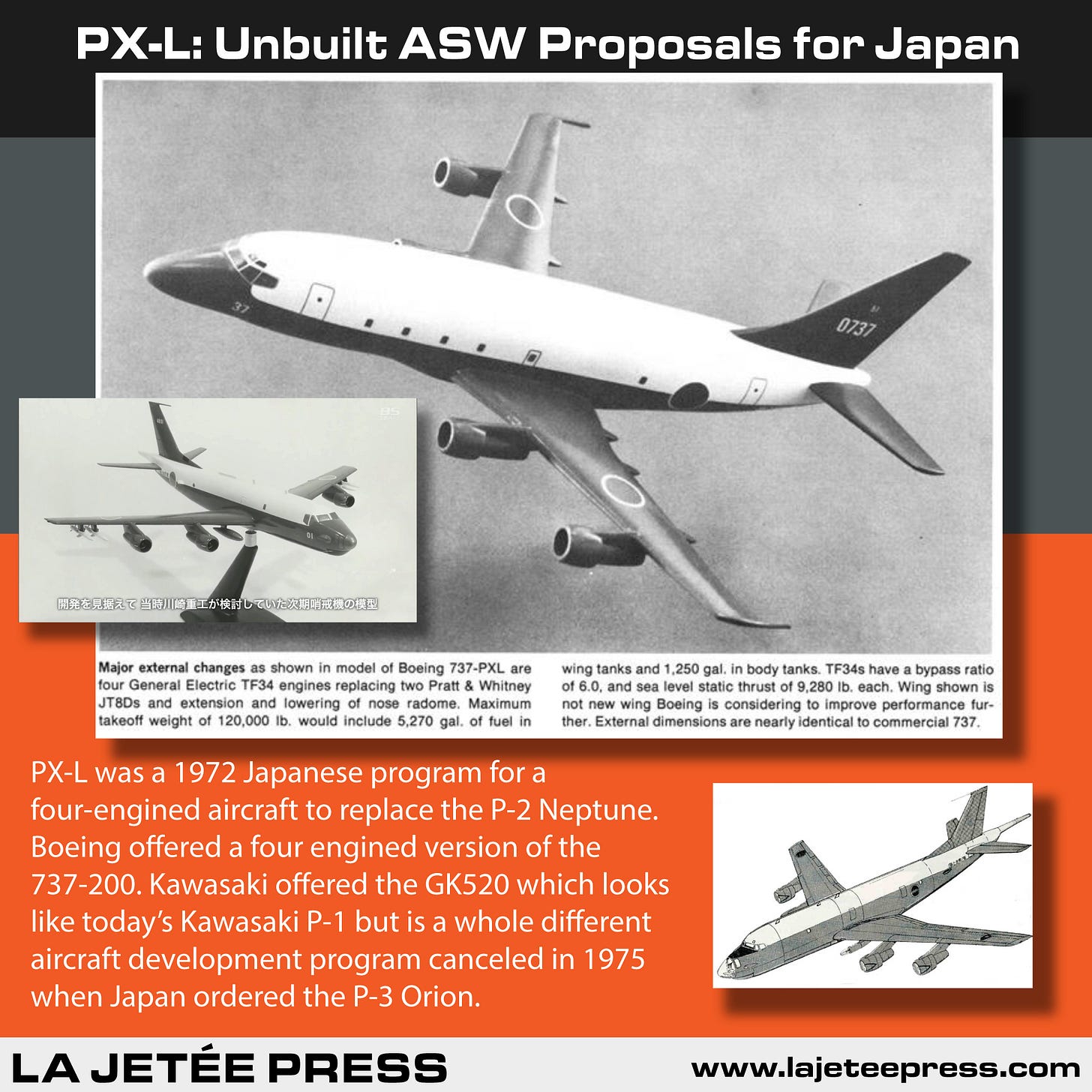PX-L: Unbuilt ASW Aircraft Proposals for Japan
The two leading designs for the early 1970s PX-L program were from Boeing for a four engined development of the 737-200 and a Kawasaki design.
In 1972, Japan launched the PX-L program (Patrol Experimental-Landbased) for a four-engined successor to the P-2 Neptune maritime patrol aircraft that Japanese Maritime Self-Defense Force had been operating since the early 1960s, having license built the aircraft as well as operated a turboprop version of the Neptune.
Kawasaki, the company that built the P-2J turboprop version of the Neptune, was selected as prime contractor for the PX-L program and was working on an all-new purpose built design with four jet engines that had the company designation GK520. Work on the GK520 was suspended temporarily to allow examination of offshore candidates.
One of those candidates was a four engined version of the Boeing 737-200. Boeing even offered to have Japan build the aircraft domestically to sweeten the deal. The two JT8D engines of the 737-200 were replaced by four GE TF34 turbofans (similar to what was used on the S-3 Viking and A-10 Thunderbolt). The option of a new supercritical wing was discussed. The MAD booms instead of being a tail stinger would have been a twin installation on each wingtip. The nose radome was enlarged and drooped to allow 360 degree coverage under the aircraft.
Ultimately Japan decided in 1975 to order the Lockheed P-3 Orion to meet its PX-L requirement.
While the Kawasaki GK520 has a strong resemblance to today's Kawasaki P-1 ASW jet, they are in fact two distinctly different programs with no relationship to each other.



